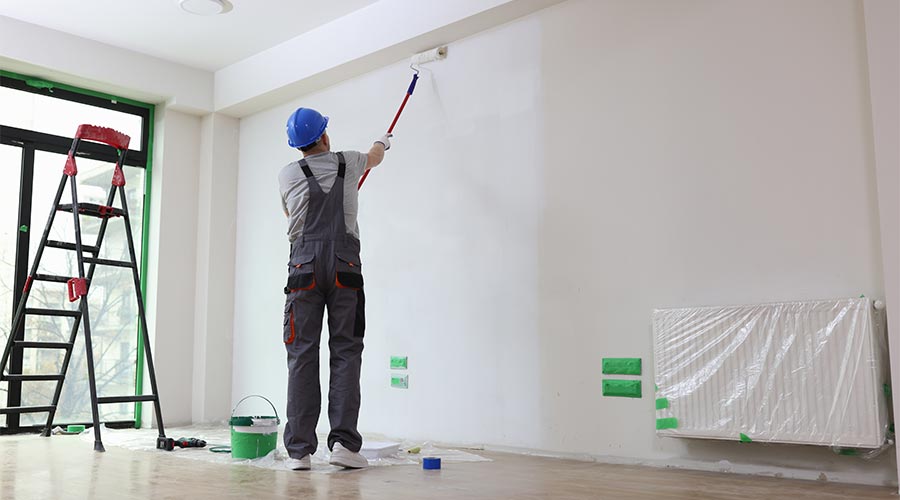Green Paint Standards Protect IAQ and Occupants
Historically, paints have been a repository for all kinds of chemicals that might prove harmful to humans.
In part, this concern led to the formation of certifiers who address the need to test for VOCs and air quality.
Greenguard Indoor Air Quality Certification, for example, requires testing for all volatile chemicals that off-gas from products. Out of the more than 10,000 VOCs that products can release into the air, the organization has set limits for 364 of them. The limits are based on 10 percent of the Threshold Limit Values set by the American Conference of Government Industrial Hygienists.
To address the vast number of VOCs that have not been studied for their human health effects and have no regulated limit, Greenguard requires that the total sum of all VOCs off-gassing from products does not exceed 0.5 mg/m3.
"Health science cannot keep up with the exponential number of new compounds being introduced in the marketplace every day," says Bloech. "But we believe that exposure to these compounds should be severely limited until we know they are safe."
Bloech explains that this is a precautionary measure. "After all, the U.S. only recently classified formaldehyde as a carcinogen — despite using it freely for decades," he says.
The process Green Seal uses for its paint standard, GS-11, is based on a similar line of thinking.
"The first edition of the GS-11 standard prohibited 25 chemicals such as toluene, benzene and formaldehyde," says Chipperfield. "But with the rapid growth of formulation technology, Green Seal wanted to expand this list to eliminate the possibility that a chemical could be used that was as harmful or potentially worse than the 25 chemicals on the list."
By including a more comprehensive list of prohibited chemicals, she says, the standard removes these loopholes and ensures paint formulas are safer. Hazardous air pollutants and ozone-depleting compounds are prohibited during certification, as are carcinogens, mutagens and reproductive toxins.
And although low- or zero-VOC paints have experienced increased sales, Chipperfield says many shoppers are not aware that they can increase the VOC levels by adding colorants to the base paint. For most paints, the darker the tint, the higher the VOC of the final blend.
Impact on IAQ
Because paint is a frequent coating on interior surfaces, the greenness of any given paint product is a major contributor to indoor air quality.
Bloech puts it this way: "Often, when we think of green labels or certifications, we think of the impact a product may have on the outdoor environment — i.e., carbon footprint, outdoor smog formation, water pollution, etc. Unfortunately, a product's impact on our indoor environments — where we spend 90 percent of our time — and our health is often overlooked or assumed to be minimal."
The U.S. Environmental Protection Agency attributes the following symptoms to VOC exposure, and lists paint as the first source for VOCs: eye, nose, and throat irritation; headaches, loss of coordination, nausea; damage to liver, kidney, and central nervous system.
Some VOCs can cause cancer in animals, according to EPA, and some are suspected or known to cause cancer in humans.
Keeping Kids and the Sick Safe
The Collaborative for High Performance Schools is an excellent source for facility managers in institutional and educational settings. The organization's product database is still in beta form, and not many paint products are listed, but it can serve as an additional resource for facility managers on the hunt for low-emitting paints.
Greenguard also certifies to more stringent standards via its Children & Schools certification. The program addresses products and materials used in buildings intended for more vulnerable populations, such as children, the elderly and the immuno-compromised. Therefore, the chemical emission limits are more stringent.
In essence, the program shaves total VOC limits, and all products certified in the program have to meet one-half of California's Chronic Reference Exposure Levels (CRELs), which are the threshold limit values for VOCs set by California under the Section 01350 specification.
— Loren Snyder
|
Related Topics:














